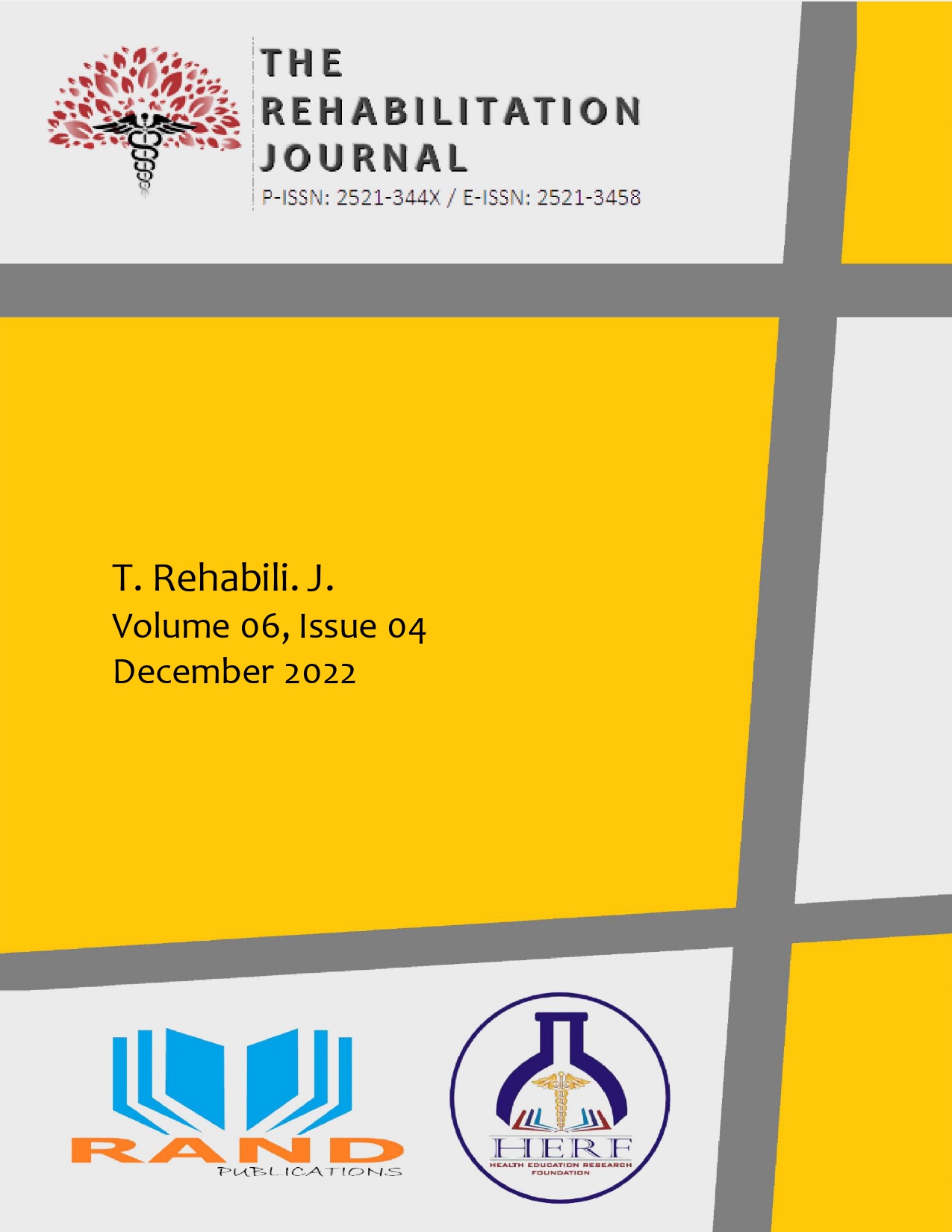AUGMENTED EFFECTS OF SENSORY INTEGRATION THERAPY AND VIRTUAL REALITY ON MOVEMENT AND BALANCE ISSUES IN CEREBRAL PALSY: A PILOT STUDY
DOI:
https://doi.org/10.52567/trj.v6i04.165Abstract
Background: Cerebral Palsy (CP) causes many sensory and motor deficits in children which may lead to deterioration of their functional activities and daily life. Effective interventions are required to be worked on, which can improve the movement status of such subjects. Objective: To determine the effects of sensory integration therapy (SIT) in addition with virtual reality (VR) and Conventional Physical Therapy in subjects with cerebral palsy. Methods: A Pilot randomized control trial (RCT) was conducted at Pakistan Railway Hospital Rawalpindi from July to December 2019. The n=26 subjects were recruited after fulfilment of inclusion criteria; male and female diagnosed spastic CP subjectswith age 5-12 years, gross motor function classification system (GMFC) level I-II, can independently walk ≥ 5 meters, spasticity of lower limb <3 on Modified Ashworth Scale (MAS), able to understand commands and play gamesThe subjects were randomly divided into group A, receiving sensory integration therapy (SIT) in addition to virtual reality (VR) and conventional physical therapy CPT), while group B received only virtual reality (VR) and conventional physical therapy CPT). The interventions were given for 6 weeks with assessments at baseline, 3rd and 6th weeks. The outcome measures were gross motor function measurement (GMFM) for assessment of gross motor functions, pediatric balance scale (PBS) for assessment of balance in children and 2-minute walk test (2MWT) for mobility. The analysis was done via SPSS 21 and ANOVA test was applied. Results: The mean age of the study participants was 7.52±2.25 years. The balance Scale and 2-minute walk test showed significant interaction (p<0.001) between intervention and time. Between group analyses done by one way ANOVA, the assessment at 3rd and 6 weeks has shown significant difference (p<0.001) for GMFM standing, walking/running and total along with PBS and 2 MWT. Conclusion: Augmentation of sensory integration therapy with virtual reality has significant effects on improving gross motor functions, balance and mobility in cerebral palsy as compared to virtual reality.
Keywords: Balance, cerebral palsy, gross motor functions, virtual reality, sensory integration therapy
Downloads
Published
Issue
Section
License
Copyright (c) 2022 Sannia Batool, Aruba Saeed, Misbah Ghous, Kiran Khushnood

This work is licensed under a Creative Commons Attribution 4.0 International License.
Authors retain copyright and grant the journal right of first publication with the work simultaneously licensed under a Creative Commons Attribution (CC-BY) 4.0 License that allows others to share the work with an acknowledgment of the work’s authorship and initial publication in this journal.









